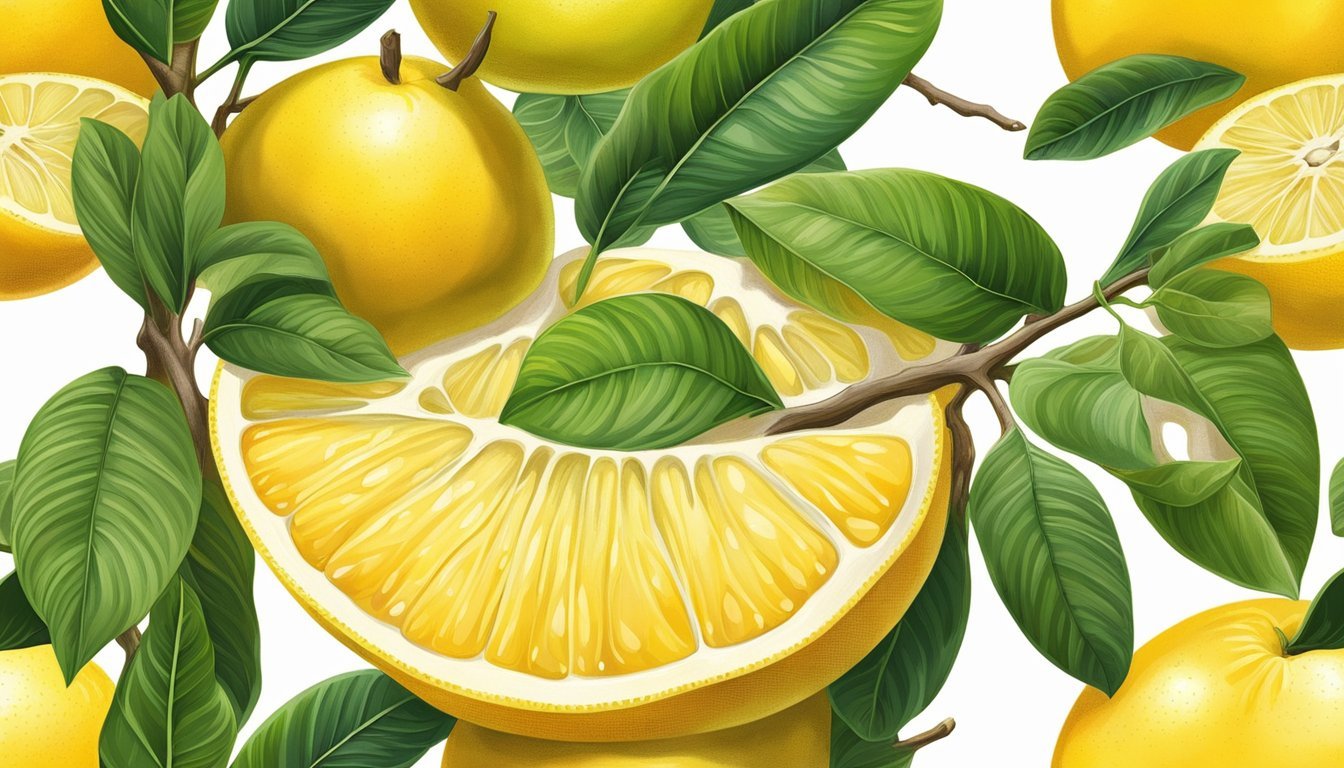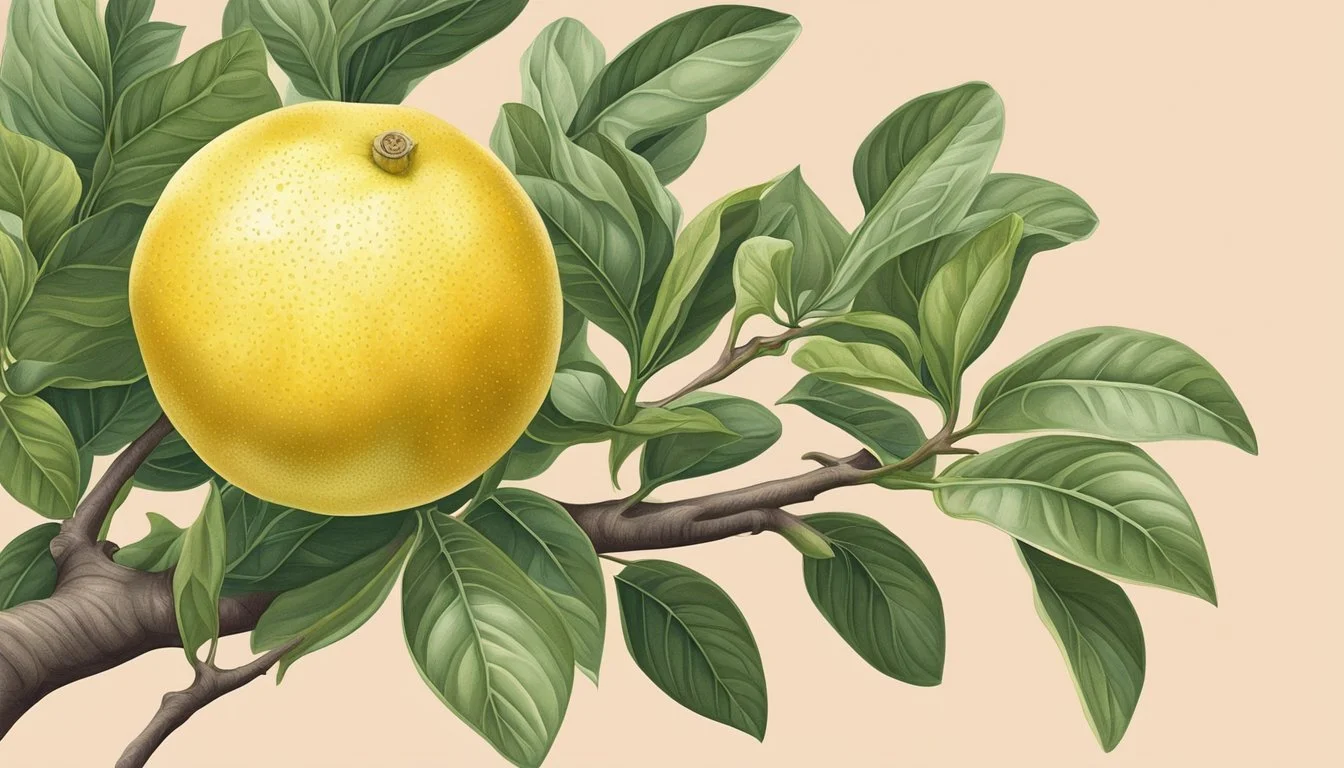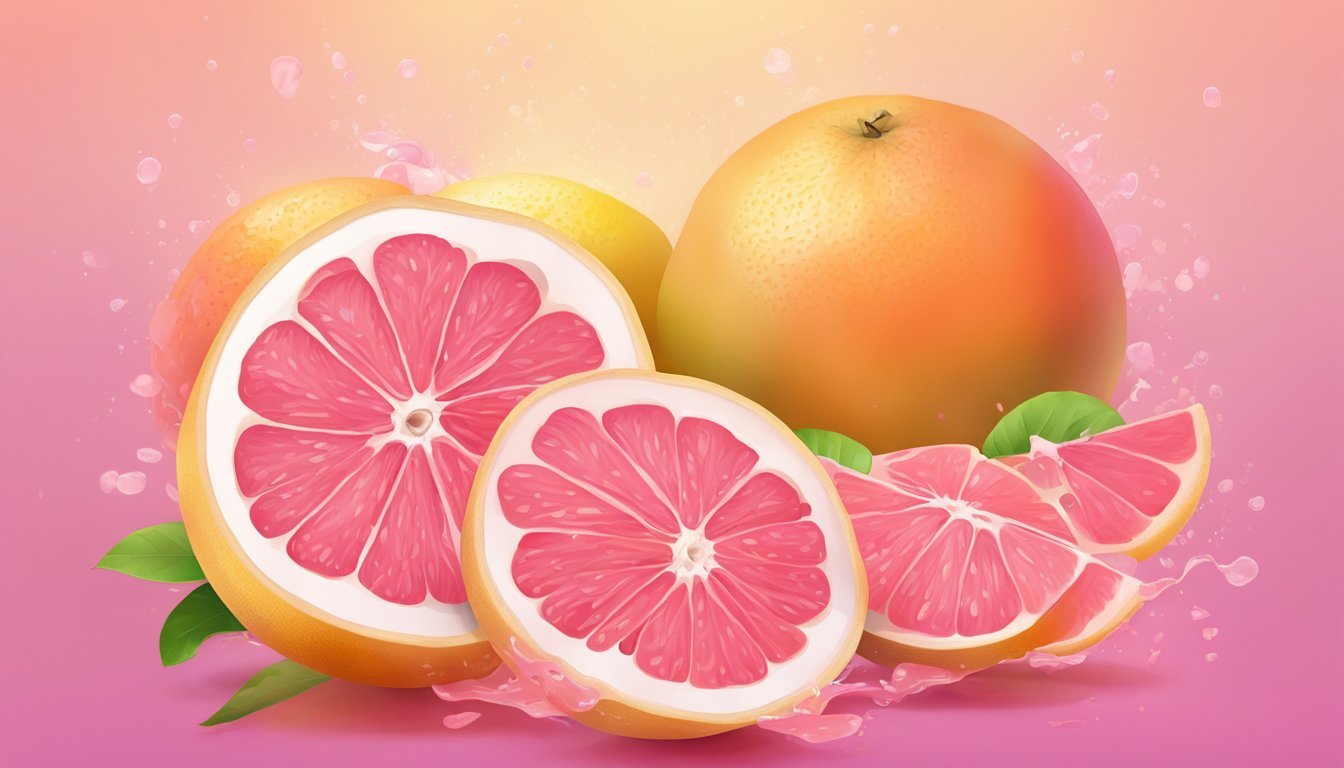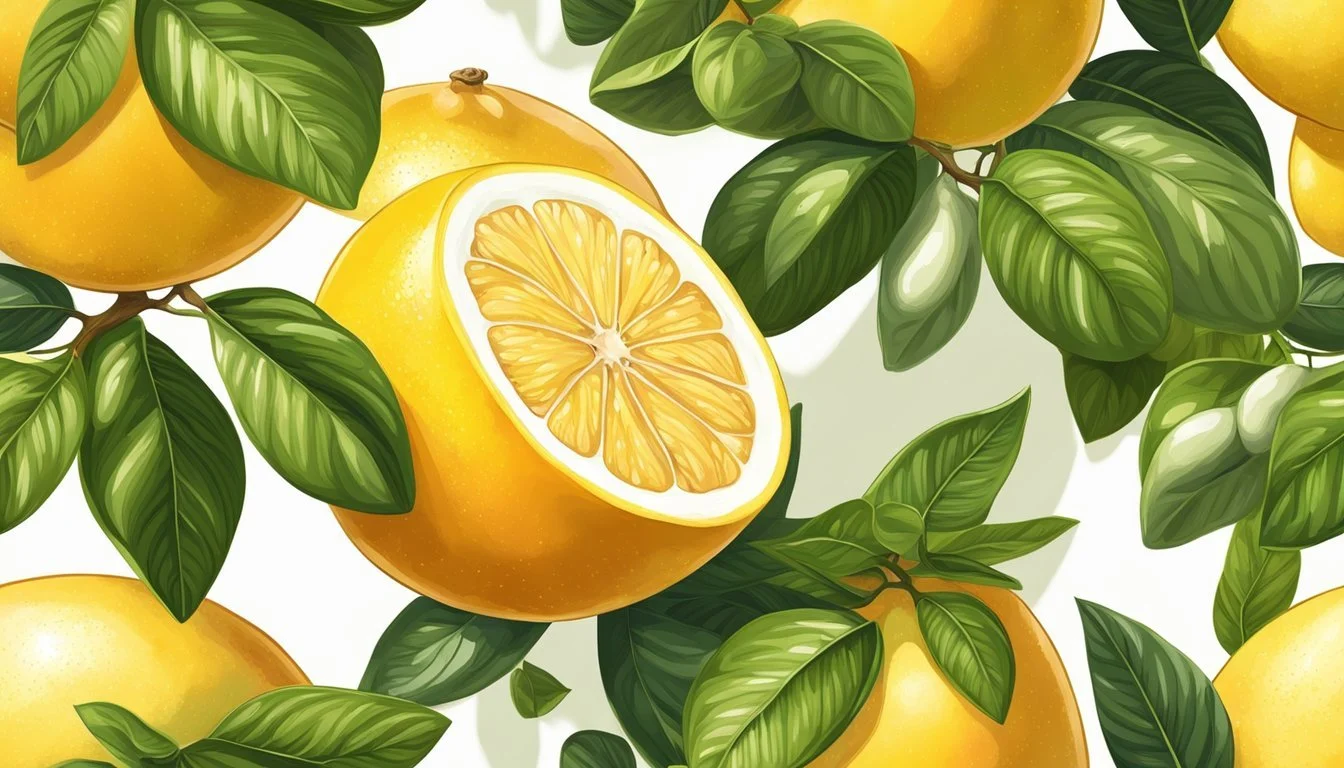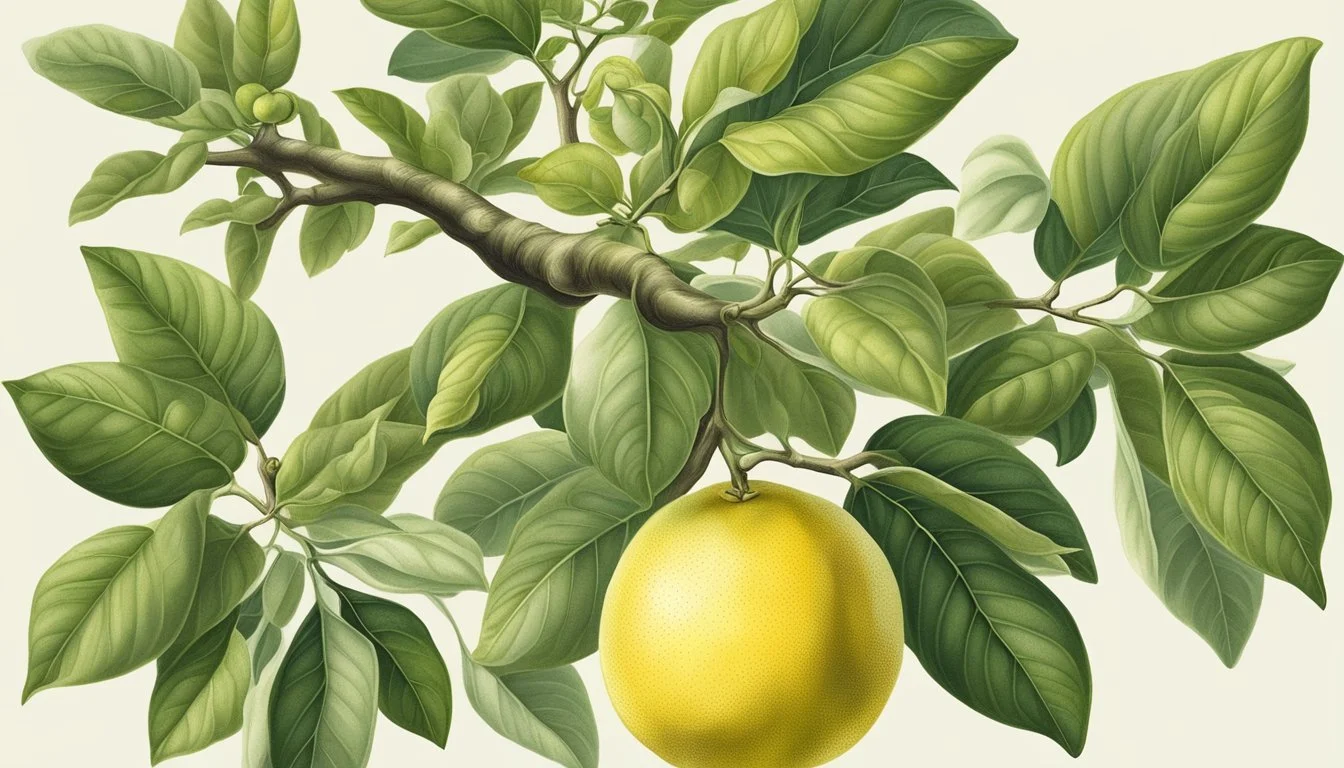How to Tell if a White Grapefruit is Ripe
Selecting Your Citrus for Peak Flavor
Selecting a ripe white grapefruit can make all the difference between a perfectly juicy treat and a disappointing experience. A ripe grapefruit offers not only an optimal balance of sweetness and tanginess but also the full range of nutritional benefits this citrus fruit has to offer. Identifying ripeness in white grapefruits requires careful observation, as their color doesn't change as noticeably as their pink or red counterparts during the ripening process. Instead, factors such as weight, firmness, and aroma become crucial indicators of maturity.
Once a white grapefruit reaches its peak ripeness, it's important to understand how to store and handle the fruit to maintain its quality. Proper harvesting techniques and storage conditions can extend the longevity of grapefruits, ensuring they remain fresh and delicious until you’re ready to enjoy them. By learning to discern the subtle signs of ripeness and understanding the best practices for storage, you’ll be equipped to select and savor the perfect grapefruit every time.
Key Takeaways
Assessing grapefruit ripeness relies on weight, firmness, and aroma rather than color change.
Proper storage and handling are essential for maintaining grapefruit quality post-harvest.
Expert tips enhance the selection process and maximize the fruit's flavor and nutritional benefits.
Understanding Grapefruit Ripeness
Recognizing when a grapefruit has reached full ripeness is essential to ensure the best flavor and juiciness. The following subsections detail how to identify the ripe stage of grapefruit maturity through sensory indicators and examine the role of color and texture.
Stages of Grapefruit Maturity
Grapefruit maturity progresses through several stages from flowering to full ripeness. Initially, the grapefruit is small and green, with a hard texture. As it matures, the fruit enlarges, and changes in skin color and texture occur. A ripe grapefruit is usually heavier, indicating a juicy content, and the skin yields slightly to pressure. Unlike some fruits, grapefruits do not continue to ripen once picked; they must reach full maturity while still on the tree.
Sensory Indicators for Ripeness
Sensory attributes are reliable indicators of ripeness:
Weight: A ripe grapefruit should feel heavy for its size, signifying a higher juice content.
Feel: The skin should be firm but slightly springy to the touch.
These tactile cues complement the visual assessment of the grapefruit's ripeness.
The Importance of Color and Texture
The grapefruit's color and texture are visual cues to its ripeness. The skin of a ripe white grapefruit will be a vibrant yellow, devoid of green patches, which suggest immaturity. The skin should also be smooth to the touch, without deep grooves or wrinkles. However, a certain degree of firm, bumpy texture is typical and indicates that the grapefruit may be prime for consumption. It's important to avoid those with overly dark or dull skin as it could indicate overripeness or poor quality.
Selecting the Perfect Grapefruit
When choosing the ideal grapefruit, attention to detail is paramount. A fruit expert would consider weight, texture, and specific variety traits as indicators of ripeness and quality.
Evaluating Weight and Shape
The weight of a grapefruit holds clues about its juiciness. One should select fruit that feels heavy for its size, which suggests a denser, juicier interior. The shape should be consistent with the variety; white, pink, and red grapefruits generally have a round to slightly oval shape. Avoid fruit that is overly misshapen, as it may indicate uneven growth or ripeness.
Examining Skin for Freshness
The skin's appearance is an essential indicator of a grapefruit's freshness. Ideal grapefruit skin will be smooth yet slightly bumpy, with a firm texture that has a little give when pressure is applied. Any signs of wrinkling or soft spots should be avoided, as they can imply overripeness or spoilage. Discoloration, such as green or brown spots, often signifies underripe or damaged fruit.
Identifying Variety-Specific Traits
It's important to recognize the specific traits of the grapefruit variety being selected. White grapefruits typically have a pale yellow skin and are less sweet than pink or red grapefruits. The latter varieties should possess a vibrant color without any green tinges. Specific tree varieties may yield fruit with particular shapes or textures, so familiarizing oneself with these can be beneficial.
Harvesting and Storing Tips
To ensure the longevity and flavor of white grapefruits, one must pay careful attention to both the harvesting and storing phases. Heeding expert advice can lead to enjoying the fruit at its best.
Best Practices for Picking
When picking a ripe grapefruit, one should look for a fruit that has smooth skin and feels heavy for its size, indicative of juicy contents. The flesh inside should not be too firm or too soft, with a slight give being the ideal texture. Once the color of the fruit is uniform, and the skin is slightly bumpy but not wrinkled, it is generally the right time to pick it from the tree.
Texture: Slightly bumpy and firm with a slight give
Weight: Heavier indicates more juice
Skin appearance: Smooth, with no green or excessively soft spots
Optimal Storage Conditions
Post-harvest, one can store white grapefruits at room temperature for about a week or in the refrigerator for two to three weeks to keep them fresh. Keep them away from direct sunlight if they are not consumed immediately and avoid storing them near ethylene-producing fruits, which could hasten ripening and spoilage.
Room temperature: Up to 1 week, away from direct sunlight
Refrigerator: 2-3 weeks, in a fruit drawer or mesh bag to prevent excess moisture
Avoid ethylene: Store away from fruits like apples and bananas
By storing white grapefruits properly and picking them when they are ripe, the fruit's shelf life is maximized while ensuring the grapefruit remains fresh and delicious.
Maximizing Grapefruit Flavor and Juiciness
Selecting the ripest white grapefruit ensures the best taste experience. A ripe grapefruit offers a perfect balance between sweetness and acidity, leading to a refreshing and juicy fruit. The key to maximizing flavor and juiciness lies in knowing when to pick the fruit and how to treat it both before and after the harvest.
Identifying Peak Seasons for Juiciness
For white grapefruits, peak ripeness occurs during the cooler months, typically spanning from late fall to early spring. These months deliver grapefruits with optimal juiciness and flavor. The specific months can vary based on the region, but in general, the following timeline applies:
Fall: Early signs of ripeness; the fruit begins to sweeten.
Winter: Peak ripeness; grapefruits are at their juiciest.
Spring: End of the peak season; fruit retains sweetness but may lose some juiciness.
It's important to note that while sweet oranges often share a similar seasonal pattern, grapefruit taste is distinct and can be influenced by different factors such as climate and soil conditions.
Techniques to Enhance Sweetness
To enhance the natural sweetness of white grapefruits:
Allow proper ripening on the tree. The fruit should feel firm with a slight give. Its full size and a change in color from green to a more yellowish hue are good indicators.
Store at room temperature before consumption. A few days at room temperature can make the grapefruit juicier and slightly sweeter as it allows the acids to break down further.
Consider 'tree-ripening' technique. Unlike many fruits, grapefruits do not continue to ripen significantly after being picked. For the sweetest and juiciest fruit, they should be left on the tree as long as possible.
Use a 'sugar soak' method post-harvesting (if the fruit is less sweet than desired). Briefly soaking sliced or segmented grapefruits in a light sugar syrup can enhance sweetness and make the juice more palatable.
By understanding and applying these techniques, one can ensure that their white grapefruit consumption is at its most enjoyable, with each piece offering a burst of juicy, sweet flavor.
Health Benefits and Nutritional Information
White grapefruit is a treasure trove of nutrients, offering an array of health benefits packed into a low-calorie profile. The fruit is particularly esteemed for its vitamin C content and dietary fiber, which support various aspects of bodily health.
Vitamin C Content
White grapefruit is an excellent source of vitamin C, a potent antioxidant that plays a critical role in the immune system. This citrus fruit helps combat free radicals and is essential for collagen production, aiding in skin health and wound healing. One-half of a white grapefruit typically contains more than 70% of the recommended daily intake for vitamin C.
Dietary Advantages of Regular Consumption
Incorporating white grapefruit into one's diet can offer numerous advantages:
Heart Health: The dietary fiber in grapefruit is known for its ability to support heart health by reducing inflammation and aiding in healthy blood pressure levels.
Digestive Health: The fiber content also contributes to improved gut health, helping to prevent constipation and support the growth of beneficial bacteria.
Cholesterol Management: Regular consumption of fiber-rich foods such as grapefruit has been linked to maintaining healthier cholesterol levels.
The natural acidity and sour flavor of grapefruit are attributable to its ascorbic acid (vitamin C) content, which, aside from providing the characteristic taste, contributes to the fruit's health-promoting properties.
Common Pitfalls When Choosing Grapefruits
Selecting the perfect white grapefruit can sometimes be tricky, and consumers often encounter several common pitfalls. Here is a succinct guide to avoid such missteps:
Misjudging Ripeness: A grapefruit that is too hard indicates underripe fruit, lacking in juice and sweetness. Conversely, if a grapefruit gives too much when gently squeezed, it may be overripe or mushy inside, leading to an unpleasant eating experience.
Ignoring Surface Blemishes: Surface spots or blemishes can be superficial, but they're sometimes signs of deeper problems. Minor imperfections are generally harmless, but areas of significant discoloration or damage could signal rot or decay.
Weight and Texture Misconceptions: A ripe grapefruit should feel heavy for its size, a hint at its juiciness. The skin should be firm but not unyielding, as an overly soft texture could indicate the grapefruit is past its prime.
Overlooking Aroma: A ripe grapefruit emits a sweet, citrusy aroma. A lack of scent could imply the fruit is underripe, while an off or fermented smell suggests spoilage.
To ensure the selection of a perfectly ripe grapefruit, consumers are encouraged to:
Check for uniformity in color.
Feel for a slight give, but avoid overly soft fruit.
Look for a smooth texture with no significant blemishes.
Pick up the fruit to assess its weight—it should feel dense.
Smell the grapefruit for a fresh citrus scent.
By sidestepping these pitfalls, one can confidently select the best white grapefruits for a deliciously juicy experience.
Innovations in Grapefruit Cultivation and Distribution
Advancements in the cultivation and distribution of grapefruit have seen a remarkable uptick, particularly with the advent of services like Craft Citrus Club and specialized offerings such as the Rio Box.
Developments in Citrus Farming
Farmers in areas like South Texas have optimized their growth strategies to cultivate varieties of grapefruit, such as the Rio Red and Star Ruby, leveraging their naturally warm climates to produce tree-ripened fruit that boasts superior quality. Recent techniques include precision agriculture methods that involve monitoring tree health and fruit development with sophisticated technologies. These methodologies ensure that each grapefruit reaches the consumer at its peak ripeness and flavor profile.
Exploring Curated Citrus Subscriptions
Specialized citrus subscriptions represent a significant innovation in the distribution of fresh-harvested citrus. Companies such as Craft Citrus Club offer a curated box service that delivers a selection of premium, tree-ripened citrus directly to consumers' doors. For example, the Grande Box includes an assortment of citrus like Rio Red grapefruit, Star Ruby grapefruit, and sweet mandarins. The convenience of these subscriptions connects citrus lovers with the freshest seasonal varieties, like the mildly sweet Oro Blanco, ensuring a consistent supply of high-quality fruit.
Frequently Asked Questions
In this section, experts address common queries regarding the handling of underripe and overripe white grapefruits and how to prevent and identify common diseases affecting them.
Handling Underripe and Overripe Grapefruits
Underripe grapefruits often exhibit a firm texture with minimal give when slight pressure is applied. They may lack the signature citrusy fragrance associated with ripeness and can have a somewhat paler hue. To speed up the ripening process, store these grapefruits at room temperature away from direct sunlight.
If an underripe grapefruit is accidentally picked or purchased, consider the following steps to manage it:
Room Temperature: Leave the underripe grapefruit on the counter to allow it to ripen naturally.
Paper Bag: Enclose the grapefruit in a paper bag with an ethylene-producing fruit like an apple to expedite ripening.
Overripe grapefruits, conversely, might have softer spots and might be excessively soft overall. Their peel may appear somewhat wrinkled, and the sweet, citrusy aroma might be reduced or have fermented undertones. An overripe grapefruit's flavor is often sweeter, yet it may lack the desired freshness.
Handling tips for overripe grapefruits include:
Immediate Consumption: Use overripe grapefruits as soon as possible to prevent further degradation.
Refrigeration: To slow additional ripening, refrigerate the grapefruit. This can extend its life a bit longer, although the quality might be compromised.
Preventing and Identifying Common Diseases
White grapefruits are susceptible to a range of diseases that can affect their quality and edibility. Key indicators of disease include abnormal spots on the skin, an off-putting fragrance, or alterations in the texture of the fruit.
To prevent and identify common diseases:
Inspection: Regularly inspect grapefruits for unusual spots or textures.
Cleanliness: Ensure that the area where the grapefruits are stored is clean to minimize the risk of disease.
For recognition of diseases in grapefruits, one should look for:
Soft Spots: Soft, brown spots might indicate the presence of a fungal infection.
Aroma Changes: A sour or unpleasant aroma might signal spoilage or bacterial growth.
It's crucial to handle fruit with care to preserve its quality and avoid the spread of disease. If a grapefruit shows signs of disease, it should be discarded to prevent contaminating other fruits.
Advanced Tips from Citrus Experts
As citrus enthusiasts seek the ultimate taste experience, understanding the nuances of ripeness and culinary use are paramount. White grapefruits, beloved for their balance of sweetness and tartness, require special attention to harness their full potential.
How to Use Grapefruit in Culinaries
Grapefruit's role in the culinary world extends far beyond a simple breakfast companion. A perfectly ripe white grapefruit boasts a sweetness that complements salty and savory dishes alike. For an enhanced taste, chefs recommend using the plump and juicy segments in salads or as a bright accent to seafood. The bitterness of the pith can be mitigated by pairing the citrus with honey or a reduction of balsamic vinegar, unlocking a sophisticated sweet-tart flavor profile.
Expert Advice on Achieving Optimal Ripeness
When it comes to choosing a ripe white grapefruit, experts insist that one should look for fruits that are heavy for their size, as this indicates ample juiciness. The texture of the skin should be smooth yet firm, and the presence of a slight give when you squeeze the fruit gently suggests that the interior is ripe and ready to eat. Avoid grapefruits that feel overly soft or have spots; these are signs of overripeness or spoilage. When selecting for sweetness, note that white grapefruits are generally less sweet than their red or pink counterparts, yet a ripe white grapefruit will still possess a delightfully sweet fragrance.
Conclusion
Selecting a ripe white grapefruit may seem daunting, but with the right indicators, one can confidently choose a fruit that promises refreshing zest and optimal taste. As a robust citrus fruit, grapefruits come in various varieties, each with a unique profile of flavor and acidity.
Color and Feel: Seek out grapefruits with a vibrant, creamy yellow color and a surface without major blemishes. The fruit should feel firm with a slight give, indicating ripeness without being overripe.
Weight: A heavier grapefruit typically contains more juice, contributing to its freshness and flavor.
Aroma: A ripe grapefruit will emit a sweet, citrusy aroma, not too overpowering but noticeable.
Storage: Once selected, store the grapefruit at room temperature if it will be consumed soon. For extended freshness, refrigeration is recommended.
It's important to note that while some varieties might have subtle differences in ripeness indicators, the outlined guidelines are generally applicable across most. When choosing grapefruit, or any citrus fruit for that matter, sensory cues are paramount. The next time one picks up a white grapefruit, applying these straightforward selection criteria will lead to a delightful citrus experience.


